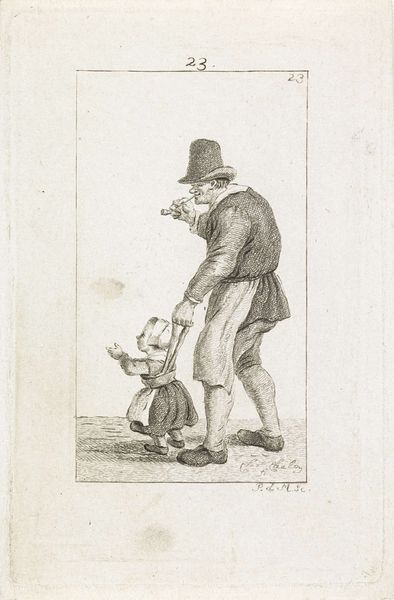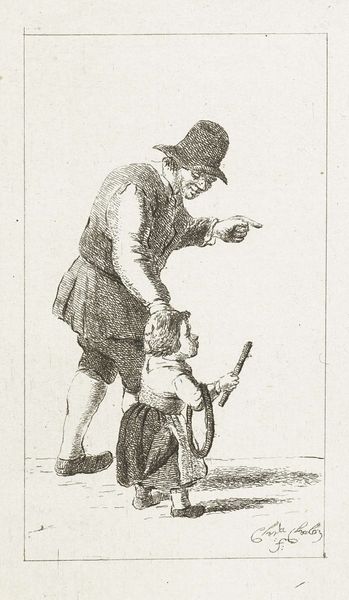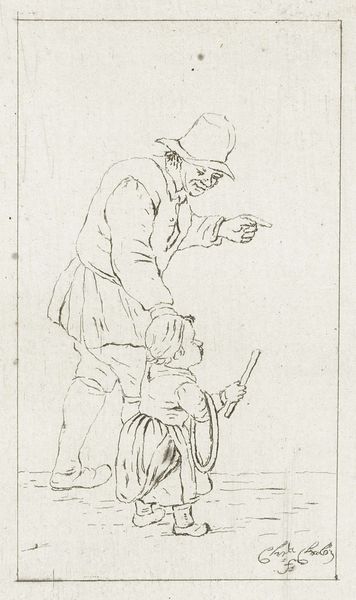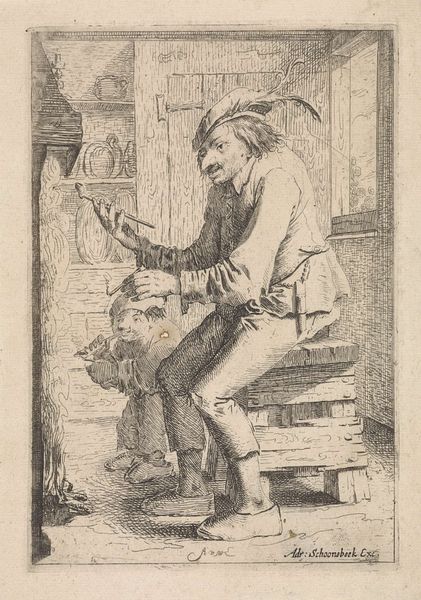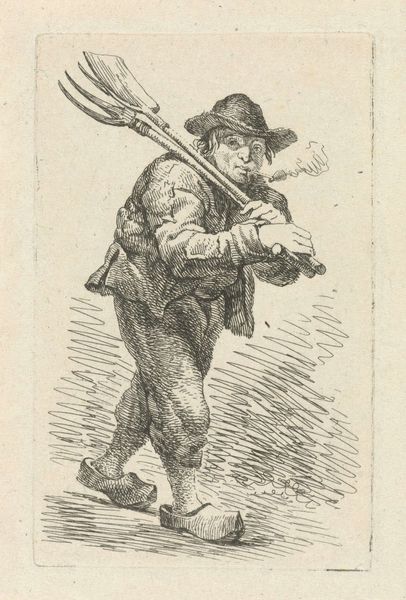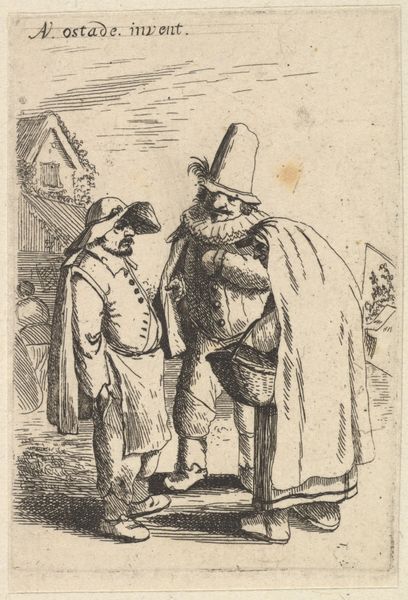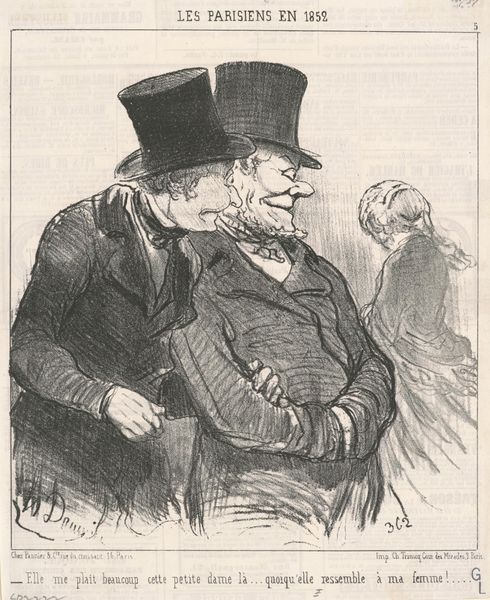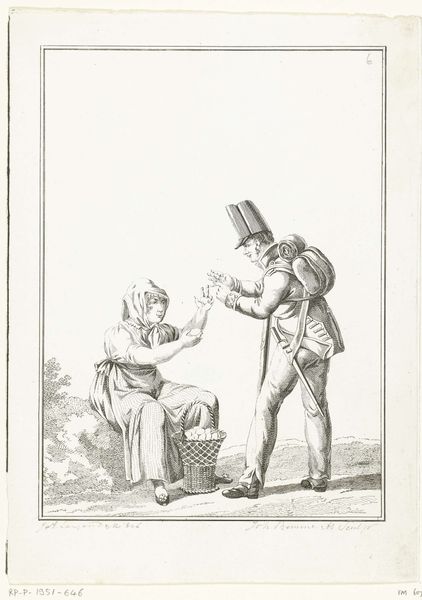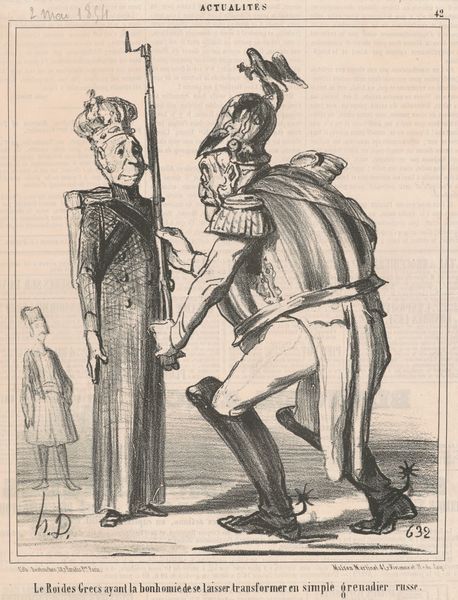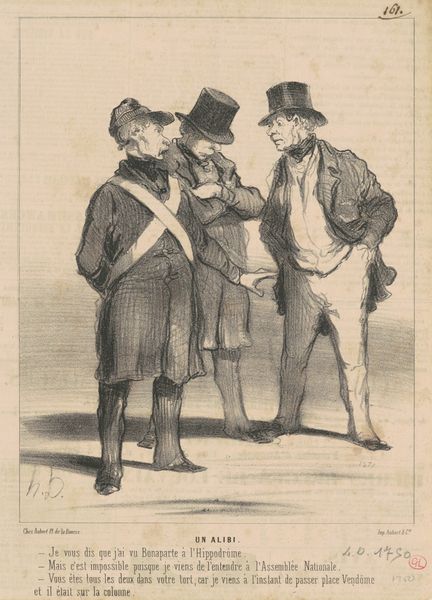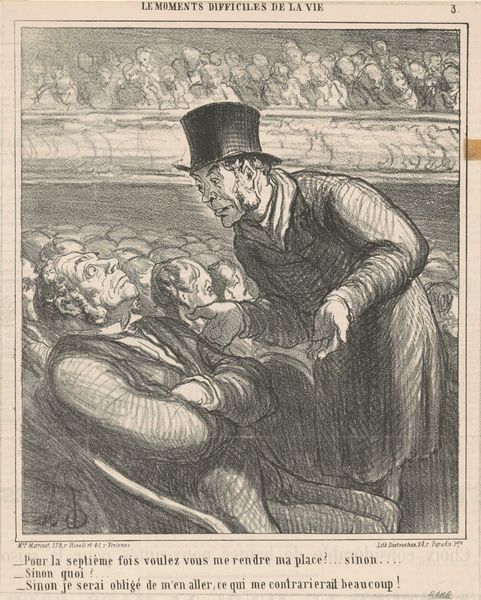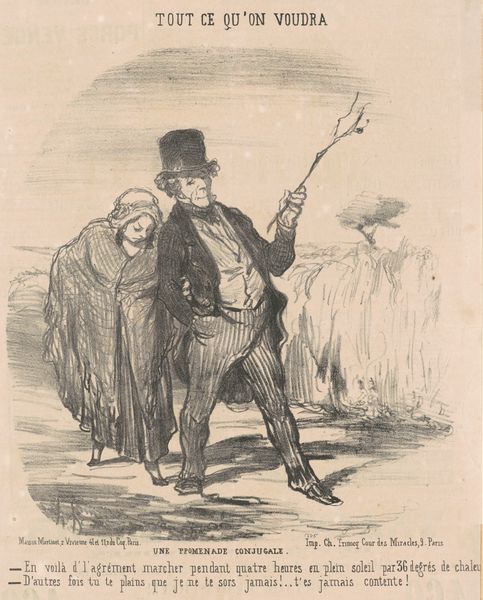
drawing, pen
#
portrait
#
drawing
#
light pencil work
#
quirky sketch
#
pencil sketch
#
figuration
#
personal sketchbook
#
idea generation sketch
#
sketchwork
#
pen-ink sketch
#
sketchbook drawing
#
pen
#
pencil work
#
genre-painting
#
initial sketch
Dimensions: height 122 mm, width 81 mm
Copyright: Rijks Museum: Open Domain
This drawing of a man with a child on a leash was made by Pieter de Mare around the late 18th century. The leash is a striking symbol. In this context, it speaks to the relationship between parent and child, hinting at guidance and control. Interestingly, the motif of a leash appears in various guises throughout art history. We see dogs on leashes in hunting scenes in medieval tapestries, but here the presence of a child introduces a curious dynamic, and the symbolism shifts. The child’s slightly raised arms might be read as a subconscious expression of the desire for freedom, yet they are physically tethered. There’s a psychological tension here: the child's striving for independence, constrained by the parent’s protective hand, and manifested through this leash. Such visual arrangements engage us on a deeper level because they echo our own internal struggles between freedom and security. The symbol of the leash, therefore, isn't merely a constraint; it's a complex interplay of love, authority, and the eternal dance of growth and control, resurfacing through time.
Comments
No comments
Be the first to comment and join the conversation on the ultimate creative platform.
